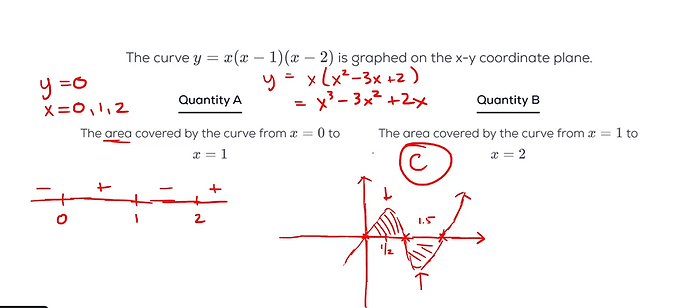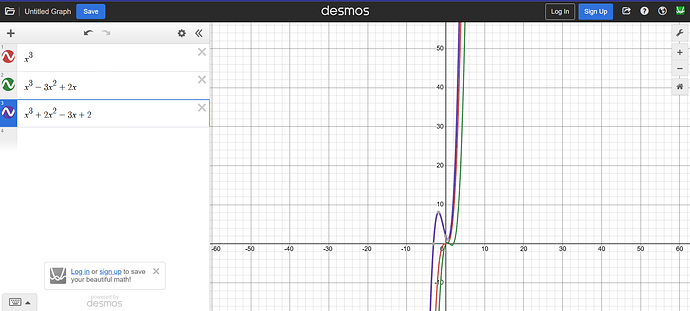Hi! Question here-
In this question, I was able to determine x-intercepts from the equation. But I could not figure out the shape of the graph defintely, to say whether the shape (as drawn by Greg) is symterical or not (and thus to say that the base is same, and heights are also same).
Can you guide me on how I can move forward to determine the shape of the graph / any other deduction to say that the two given areas are equal?
Just substitute it in the equation bro, if x = 0.5 then,
y = 0.5 x (-0.5) x (-1.5) which is 0.375
similarly if x = 1.5 then,
y = 1.5 x (0.5) x (-0.5) which is -0.375
so since both y coordinates are the same their heights are the same and both have the same base length 1 they have same areas. And as for the shape of the equation, cubic equations usually have an S-shaped pattern, plus you gotta use some logic, similarly quadratic equations have parabola
Do you know what the graph of the parent function ,f(x) = x^3, looks like?
If you can show that the graph coincides with itself after a rotation of 180 degrees about the point (1,0), then you can say that the areas of the ‘lumps’ are equal.
As such, you’re looking to show that f(1 - x) = -f(1 + x).
P.S. The concepts of “base” and “height” don’t really apply to a region bounded by a curve. Generally, calculus is required to explicitly calculate the area of such a region.
For example, to compute the area between x = 0 and x = 1, you would calculate the following:
\int_0^1 x(x - 1)(x - 2) \text{ d}x
Note: This specific calculation is not required to solve the problem. I included it under the P.S. section specifically to clarify the misconception about using “base” and “height” to compute areas of said region.
Yes, I understand that the parent function will cut the x-axis thrice. What I couldn’t figure is how do I for sure say area is same, but your explanation now on the 180 rotation makes sense to me, and thanks for clarifying that base, height not explicitly used here. Thanks!

